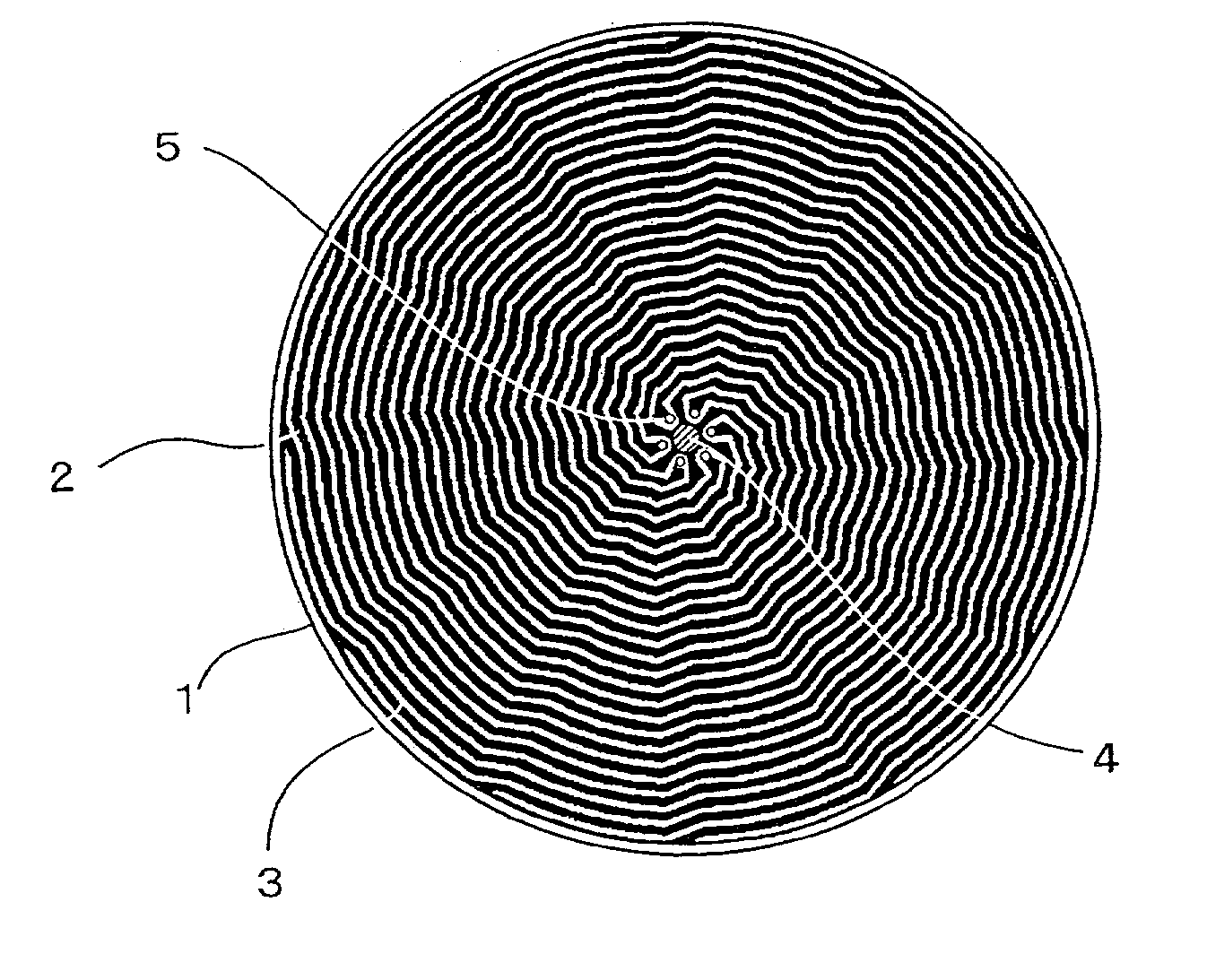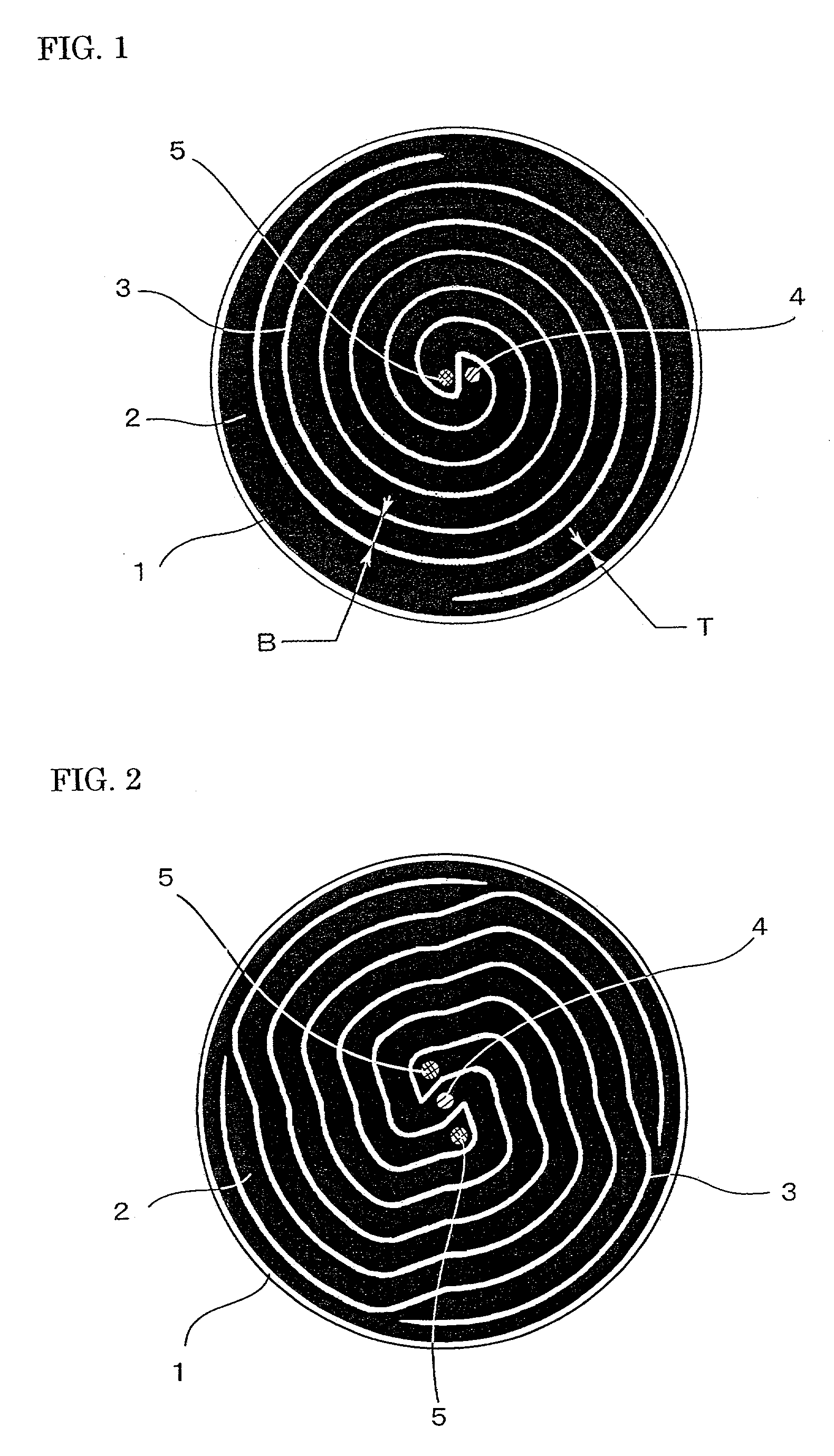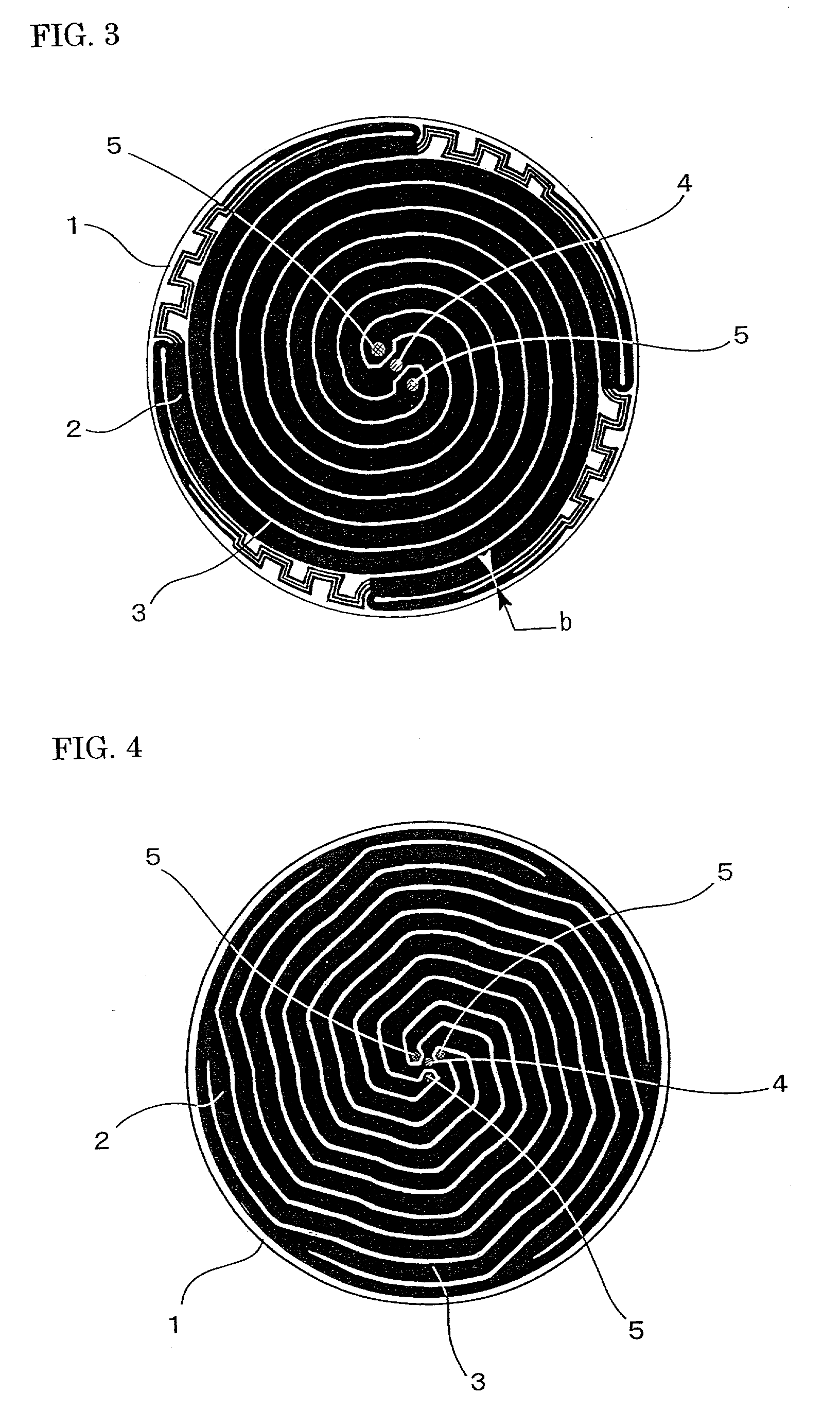Circuit pattern of resistance heating elements and substrate-treating apparatus incorporating the pattern
a technology of resistance heating elements and substrates, which is applied in the field of ceramic heaters, can solve the problems of temperature distribution on the entire surface of upsized semiconductor wafers not being equalized within the required limit, and the temperature at the peripheral portion of the insulating substrates tending to decreas
- Summary
- Abstract
- Description
- Claims
- Application Information
AI Technical Summary
Problems solved by technology
Method used
Image
Examples
Embodiment Construction
[0045] Samples shown in Table 2 were prepared to compare the present invention with the prior art shown in FIG. 8. The subject of the comparison is the uniformity of the temperature distribution produced by the individual circuit patterns of resistance heating elements. Four types of material powders, i.e., aluminum nitride, silicon nitride, alumina, and silicon carbide, were prepared as the ceramic materials for the insulating substrates. The ceramic material, a binder, a solvent, and a sintering agent as needed were mixed with a ball mill to produce a slurry. The slurry was formed into a green sheet by the doctor blade method. A resistance-heating-element circuit was formed on the green sheet by the screen-printing method using a tungsten paste.
[0046] The circuit patterns of resistance heating elements employed were those shown in FIGS. 1 to 5 and 8. Table 1 shows the width B of the resistance-heating-element circuits and the space T between the adjacent resistance-heating-element...
PUM
 Login to view more
Login to view more Abstract
Description
Claims
Application Information
 Login to view more
Login to view more - R&D Engineer
- R&D Manager
- IP Professional
- Industry Leading Data Capabilities
- Powerful AI technology
- Patent DNA Extraction
Browse by: Latest US Patents, China's latest patents, Technical Efficacy Thesaurus, Application Domain, Technology Topic.
© 2024 PatSnap. All rights reserved.Legal|Privacy policy|Modern Slavery Act Transparency Statement|Sitemap



